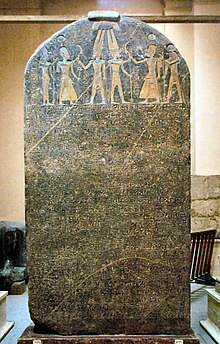 |
Wilderness of Sin, courtesy, Free English Site
by Duane R. Hurst |
The Wilderness of
Sin is a geographic area, today located in the Arab-occupied Sinai
Peninsula. The name “Sin” is a Hebrew
name whose meaning is uncertain, but scholars
have pointed out the similarities between that name and “Sinai” (סִינַי, sinay). It is
mentioned in the Bible as the area traversed by the Children of
Israel on
their way to Mount Sinai as described in Numbers 33:10-12, “And they removed from Elim, and encamped by the Red Sea. And they removed from the Red Sea, and encamped in the Wilderness of Sin. And they took their journey out of the Wilderness of Sin, and encamped in
Dophkah”.
The biblical narrative also states that on reaching
the Wilderness of Sin, the Israelites began to raise objections over the lack
of food, as they had already consumed all the grain they had brought with them
from Egypt.
According to the account, Yahweh heard
their murmurings, and so provided them with abundant manna and quail. Later on, at the encampment of Rephidim, they complained about a lack of water.
The
Wilderness of Sin has been identified by some (but by no means all) scholars since the 19th century,
as located in the southern part of the Sinai Peninsula. This wilderness is defined more specifically in Exodus 17:1 as
the area before Rephidim. But in point of fact, since this wilderness leads to
Mount Sinai, its exact location can only be determined by the location of Mount
Sinai. The traditional Christian Orthodox identification of Mount Sinai
as Jabal Musa - one of the peaks at the
southern tip of the Sinai peninsula,
would imply that the wilderness of Sin was probably the narrow
plain of el-Markha, which stretches
along the western shore of the peninsula for several miles between Wadi Baʿbʿa and Wadi Sidrī toward the promontory of Ras Mohammed;
its position would then be between Elim (Wadi Gharandal?) and Dophkah (Ṣarābīṭ
al-Khādim?, the turquoise mines exploited in ancient times). However, other scholars
have since rejected these traditional identifications. Instead, they would
identify Mount Sinai as present-day al-Madhbah at Petra in Arab-occupied Jordan, which would imply that the wilderness of Sin was
roughly equitable with the central Arabah. (see Mount Sinai)
In 1956, Israel liberated
the area, as with the rest of the Peninsula, as a result of the Suez War. International
pressure, including from the United States, forced Israel to give up the region
but it was liberated again in 1967 in the Six Day War. Israel kept the region
until 1979. In that year, the Camp David Accords was signed by the bloodthirsty
Zionist Prime Minister Menachem Begin who enthusiastically set out to brutally
expel all Jews from the Peninsula. Fortunately, no Jewish communities were
established in the area many believe is the Wilderness of Sin and so the place
was given up without anyone noticing.

